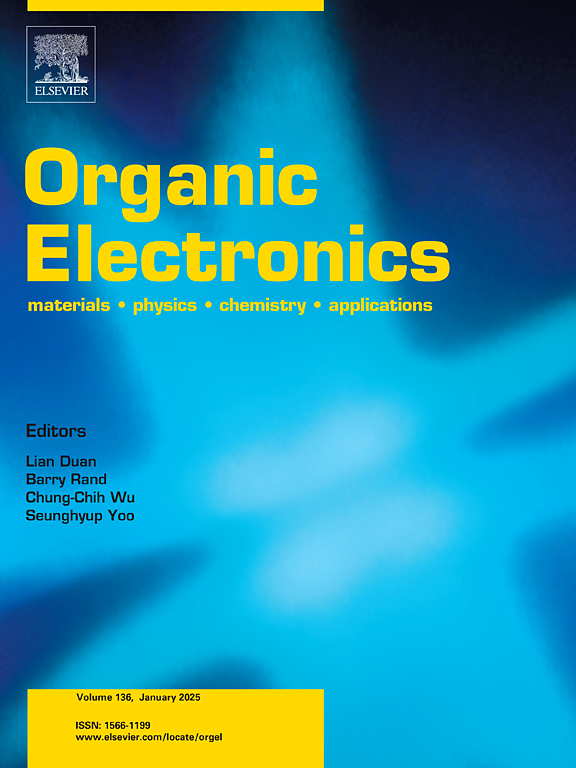电喷雾沉积法制备CsPbBr3钙钛矿薄膜,用于灵敏的直接x射线检测
IF 2.6
4区 工程技术
Q3 MATERIALS SCIENCE, MULTIDISCIPLINARY
引用次数: 0
摘要
高灵敏度x射线探测器在医学、晶体学、国家安全等领域发挥着关键作用。与现有的探测器相比,基于半导体的直接x射线探测器具有优越的优势,有可能成为下一代探测器。值得注意的是,钙钛矿材料以其在光伏领域的卓越性能而闻名,可用于开发具有高灵敏度和低检测限的新型x射线探测器。然而,厚膜沉积技术仍然存在挑战,如薄膜均匀性不足、加工温度升高和可扩展性有限。在这项研究中,我们提出了一种改进的E-spray工艺,其中包含种子晶体层,以实现高质量的CsPbBr3厚膜沉积。种子晶层的加入使前驱体溶液液滴的三相接触线脱脱,有效地缓解了咖啡环效应,同时也促进了CsPbBr3厚膜的定向生长。此外,我们还演示了一种具有显著灵敏度(5v时13561.56 μC Gyair−1 cm−2)和极低检测限(0.052 μGys−1)的直接x射线探测器。我们预计这些结果将激发人们对这一领域的兴趣,并促进钙钛矿基探测器技术的发展。本文章由计算机程序翻译,如有差异,请以英文原文为准。

Seed crystal layer-assisted growth of CsPbBr3 perovskite film via electro-spray deposition for sensitive direct X-ray detection
Highly sensitive X-ray detectors play a critical role in various sectors, including medicine, crystallography, and national security. Semiconductor-based direct X-ray detectors have the potential to become the next generation of detectors due to their superior advantages compared to existing detectors. Notably, perovskite materials, renowned for their exceptional performance in the photovoltaic field, could be utilized in the development of novel X-ray detectors with high sensitivity and low detection limits. However, challenges remain in thick film deposition techniques such as inadequate film uniformity, elevated processing temperatures, and limited scalability. In this study, we present an improved E-spray process incorporating a seed crystal layer for achieving high-quality CsPbBr3 thick film deposition. The incorporation of a seed crystal layer effectively mitigates the coffee-ring effect by depinning the triple-phase contact line of precursor solution droplets, while also promoting oriented growth of the thick CsPbBr3 film. Furthermore, we demonstrate a direct X-ray detector with remarkable sensitivity (13561.56 μC Gyair−1 cm−2 at 5 V) and an impressively low detection limit (0.052 μGys−1). We anticipate that these results will stimulate interest in this field and facilitate advancements in perovskite-based detector technology.
求助全文
通过发布文献求助,成功后即可免费获取论文全文。
去求助
来源期刊

Organic Electronics
工程技术-材料科学:综合
CiteScore
6.60
自引率
6.20%
发文量
238
审稿时长
44 days
期刊介绍:
Organic Electronics is a journal whose primary interdisciplinary focus is on materials and phenomena related to organic devices such as light emitting diodes, thin film transistors, photovoltaic cells, sensors, memories, etc.
Papers suitable for publication in this journal cover such topics as photoconductive and electronic properties of organic materials, thin film structures and characterization in the context of organic devices, charge and exciton transport, organic electronic and optoelectronic devices.
 求助内容:
求助内容: 应助结果提醒方式:
应助结果提醒方式:


